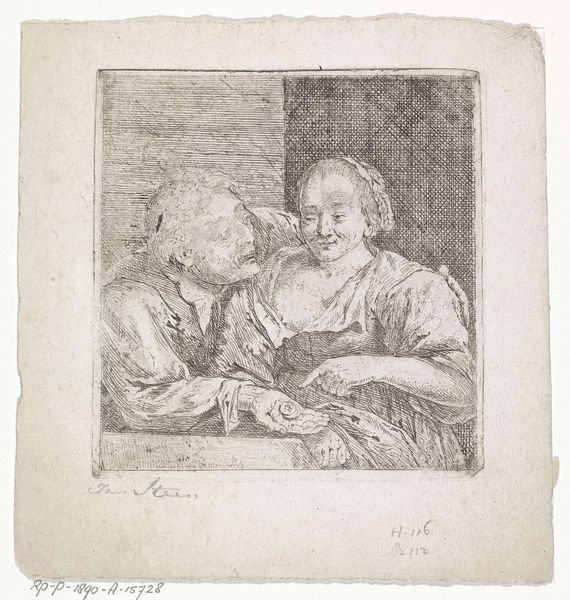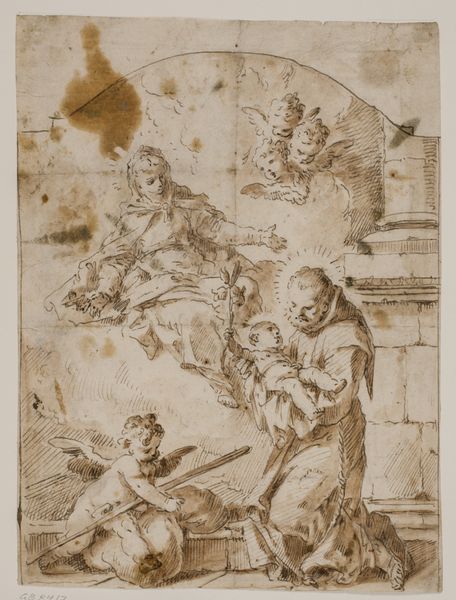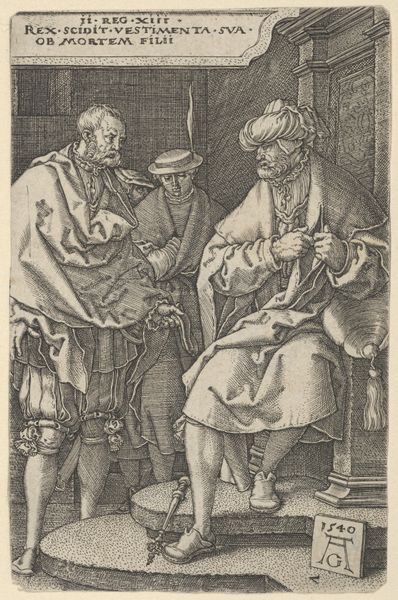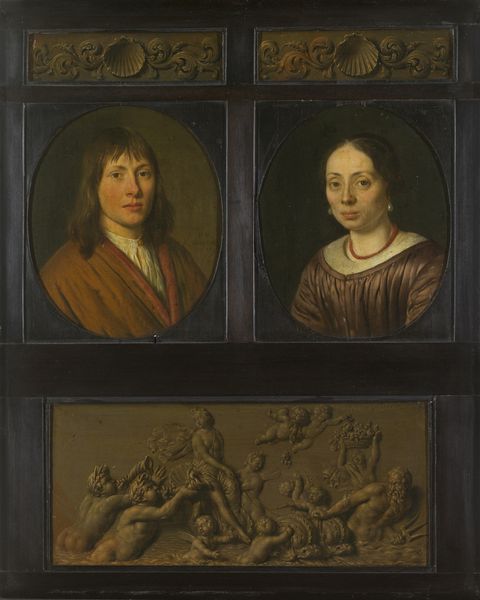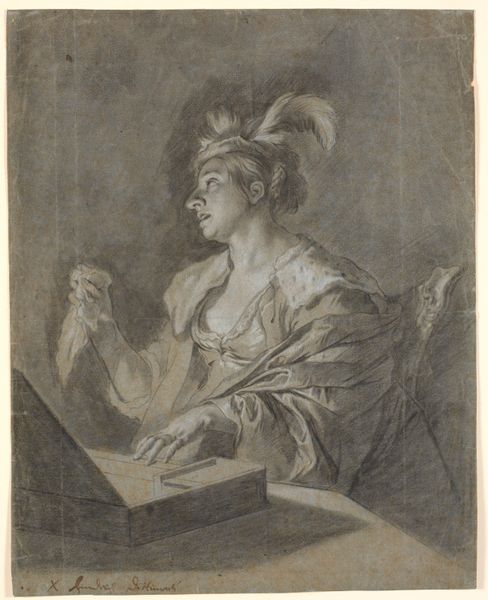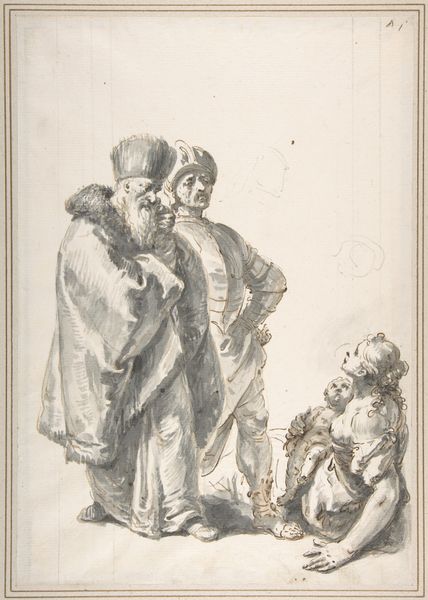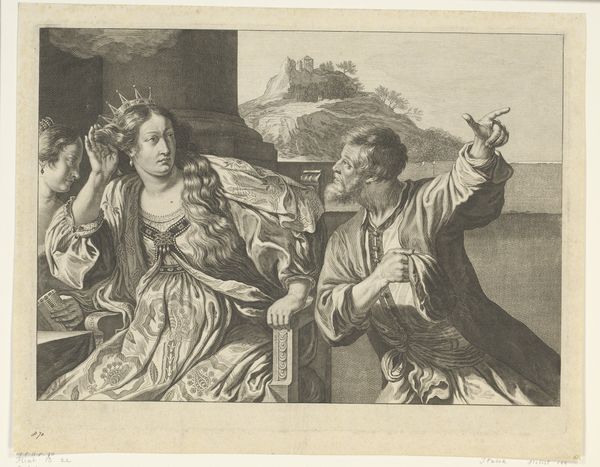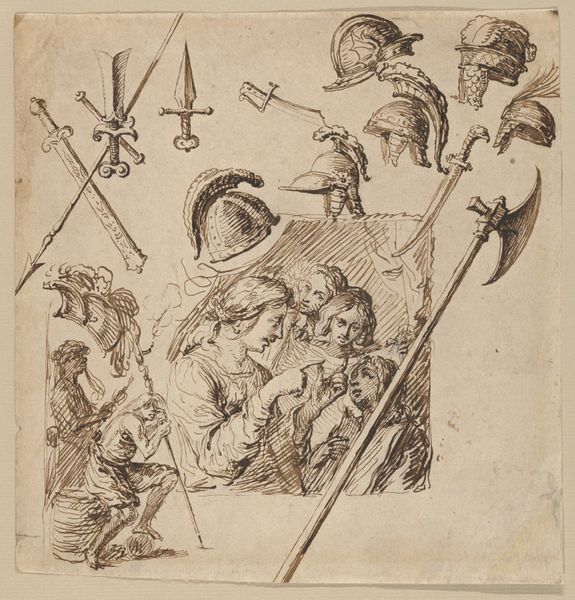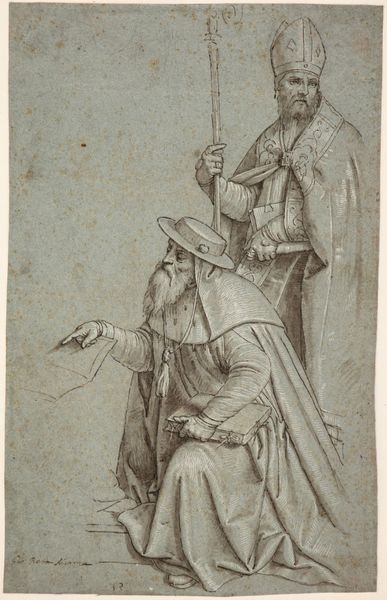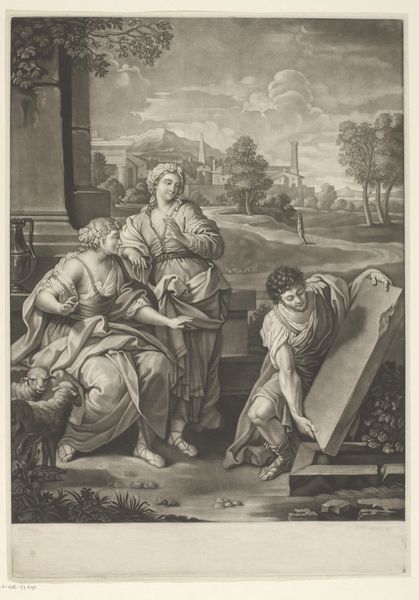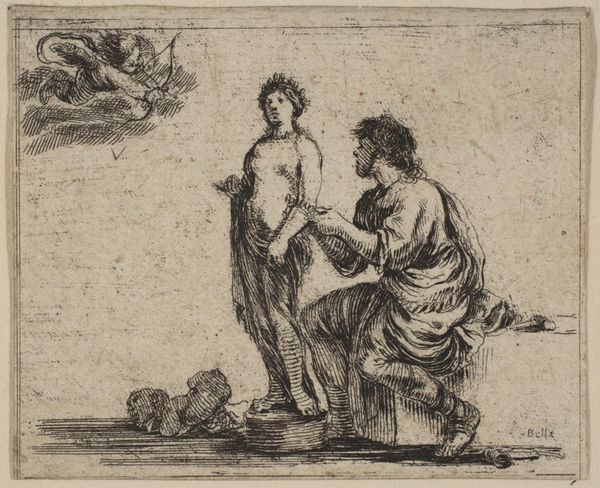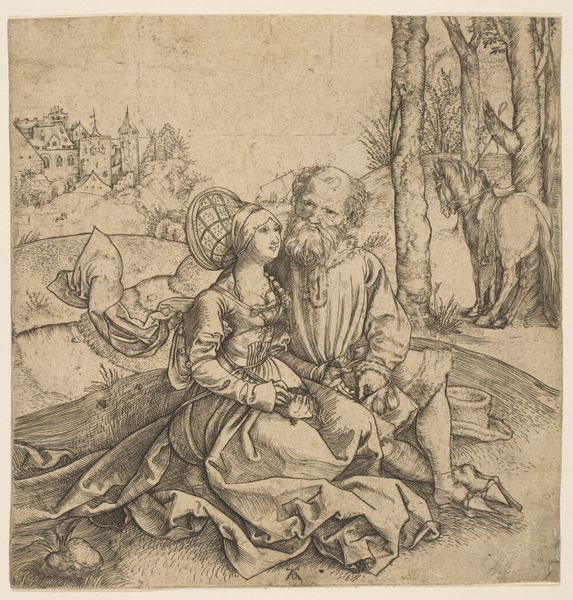
painting, oil-paint
#
portrait
#
allegory
#
baroque
#
painting
#
oil-paint
#
figuration
#
group-portraits
#
genre-painting
#
history-painting
Dimensions: height 43 cm, width 37.5 cm, depth 8.5 cm
Copyright: Rijks Museum: Open Domain
Johannes van Wijckersloot painted this panel, Allegory on the French Invasion of 1672, to comment on a fraught moment in Dutch history. It’s an intriguing visual statement about national identity and political anxiety. The painting presents two figures examining a drawing. It seems to depict a turtle pierced by arrows with a fleur-de-lis above, which symbolizes France. This is an allegory for the Franco-Dutch War, a conflict driven by Louis XIV’s territorial ambitions. The Dutch Republic, a mercantile power, was surrounded by larger, more militarized states, and the invasion was a real threat to its existence. Made in the aftermath of this crisis, this painting might be seen as a form of political propaganda, aimed at fostering a sense of national unity and resistance against foreign aggression. We can use pamphlets and other printed media from the period to get a sense of how the Dutch understood their place in the European order. We can better understand art when we understand the context that shaped it.
Comments
rijksmuseum almost 2 years ago
⋮
In 1672 the Netherlands was invaded by the French. That disaster is allegorically rendered in the drawing at which the seated man looks: the Dutch lion is defeated, its weapons in pieces, the gate to its enclosure broken; above, the French rooster crows triumphantly. Symbolizing the other side is the standing man with an orange feather in his cap: he is a supporter ofWilliam III of Orange, who would avert the French threat.
Join the conversation
Join millions of artists and users on Artera today and experience the ultimate creative platform.

